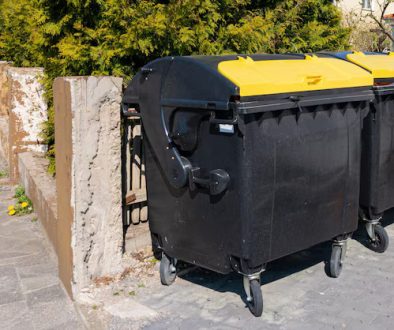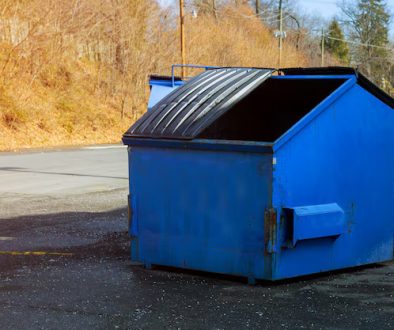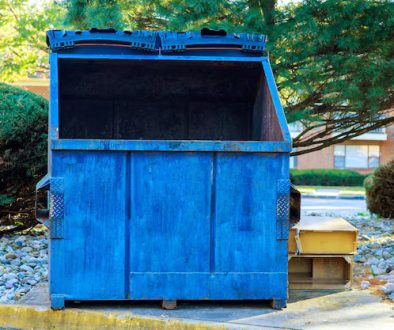Tackling garden waste can be challenging, but choosing the right skip makes the process smoother and more efficient. Whether you’re trimming hedges, mowing the lawn, or doing a full garden overhaul, proper waste management ensures your outdoor space looks perfect while minimising environmental impact.
Selecting the right skip is key to managing garden waste effectively. Many factors, like skip size and garden project type, influence the decision. Understanding these elements helps avoid the headache of overflowing waste and ensures efficient disposal.
With the right knowledge and planning, opting for the perfect skip can streamline your waste disposal process, save time, and support sustainable practices. By considering your garden’s needs and understanding your options, you can confidently take on any garden project with ease and efficiency.
Understanding Garden Waste and Its Disposal Needs
Garden waste comprises organic materials like grass cuttings, leaves, branches, and other plant debris. Proper disposal of such waste is crucial to maintaining a tidy outdoor environment and supporting recycling efforts. Unlike household waste, garden waste requires specific handling to avoid harming the ecosystem.
One primary method of managing garden waste is through composting. This process transforms organic waste into nutrient-rich compost useful for enriching soil. Composting at home helps reduce waste volumes, but not all garden waste can be composted easily, particularly larger branches or weeds.
For larger garden projects, involving substantial waste removal, hiring a skip becomes a sensible option. A skip accommodates various kinds of garden waste and offers a convenient solution for managing sizable loads effectively.
When disposing of garden waste, be aware of local regulations. Councils often have rules governing the disposal of certain types of waste to prevent environmental harm. Following guidelines ensures compliant waste management and promotes greener practices.
Understanding the nature and disposal needs of garden waste leads to informed decisions, making the management process more efficient and environmentally friendly.
Factors to Consider When Choosing a Skip for Garden Waste
Selecting the right skip for garden waste involves considering several factors. These considerations ensure that the disposal process is smooth, cost-effective, and environmentally conscious.
1. Volume of Waste: Assess the amount of waste your garden project will generate. Small projects may require a mini skip, while larger renovations may need a more substantial container.
2. Type of Waste: Determine the kind of garden waste you have. Most skips accept grass, leaves, and small branches. However, if disposing of heavier materials like soil or rubble, ensure the skip is suitable for these.
3. Skip Placement: Identify a location on your property for the skip. The spot should be accessible for easy waste loading but not obstruct pathways or roads. Clear communication with the skip provider can ensure correct placement.
4. Duration of Use: Consider how long you’ll need the skip. Some projects are quick, while others take more time. Discuss hire duration to avoid extra charges.
5. Environmental Impact: Choose a skip provider that prioritises recycling. Confirming their waste processing practices supports environmental sustainability.
By evaluating these factors, you can select a skip that meets your garden waste disposal needs efficiently, ensuring a straightforward and eco-friendly project outcome.
Different Skip Sizes for Various Garden Projects
Choosing the right skip size is vital for efficient waste disposal and cost savings during garden projects. Understanding the range of available skip sizes can help match them to specific project needs, ensuring an effective and streamlined waste removal process.
1. Mini Skips (2-3 cubic yards): Ideal for small garden projects, such as trimming bushes or lawn maintenance. These compact skips can handle light waste efficiently and are perfect for small driveways or restricted spaces.
2. Midi Skips (4-5 cubic yards): Suitable for slightly larger jobs, midi skips accommodate various waste types, including garden waste, small branches, and moderate soil quantities. They are great for garden clean-ups or minor landscaping projects.
3. Builder’s Skips (6-8 cubic yards): These skips are commonly used for medium-sized projects. They can handle a larger volume of rubbish, making them ideal for garden renovations that involve significant waste like soil, bricks, or other heavy materials.
4. Large Skips (10+ cubic yards): Best for extensive landscaping or garden overhaul projects, these skips manage bulk waste efficiently. They hold substantial waste volumes but require ample space for placement.
Finding the right skip size ensures your garden project proceeds smoothly without unexpected costs or delays, providing plenty of room for all generated waste.
Tips for Efficiently Filling Your Skip
Properly filling your skip can make a significant difference in waste management efficiency during your garden project. Employing smart strategies when loading your skip ensures optimal space use and helps avoid fines or penalties due to overfilling.
- Plan Your Loading: Start by organising similar waste types together. This improves balance and stability, allowing more efficient stacking.
- Break Down Larger Items: Cut or break down sizeable branches or materials into smaller parts. This allows for tighter packing, providing more room for additional waste.
- Load Heavy Items First: Place heavier waste like soil or rubble at the bottom of the skip. This creates a stable base and helps prevent the top layer from bulging or shifting.
- Fill Gaps: Make use of small gaps by filling them with smaller waste items. This step maximises space efficiency and ensures all available room is utilised.
- Adhere to Skip Guidelines: Ensure waste does not exceed the skip’s height limit. Overfilling can incur extra charges or make safe transport difficult.
Efficiently loading your skip not only prevents waste of space but also minimises potential issues, ensuring a smooth garden project.
Conclusion
Selecting the right skip for garden waste is an essential part of managing outdoor projects effectively. By understanding the different sizes and how they align with various project needs, you can make informed decisions that save time and reduce costs. When combined with smart loading techniques and awareness of disposal requirements, these choices support a seamless rubbish removal experience.
Proper garden waste management enhances your outdoor space and contributes to broader environmental efforts by promoting recycling and reducing landfill pressure. As you engage in garden projects, choosing the suitable skip size and filling it efficiently are critical steps to ensure a clutter-free and well-managed area.
Contact Enviro Skip Hire today for expert advice on selecting the perfect skip for your garden waste needs. With reliable skip hire in Cheshire, our tailored solutions ensure your garden projects are efficient, cost-effective, and eco-friendly. Let us help you maintain a pristine garden with our trusted services.




